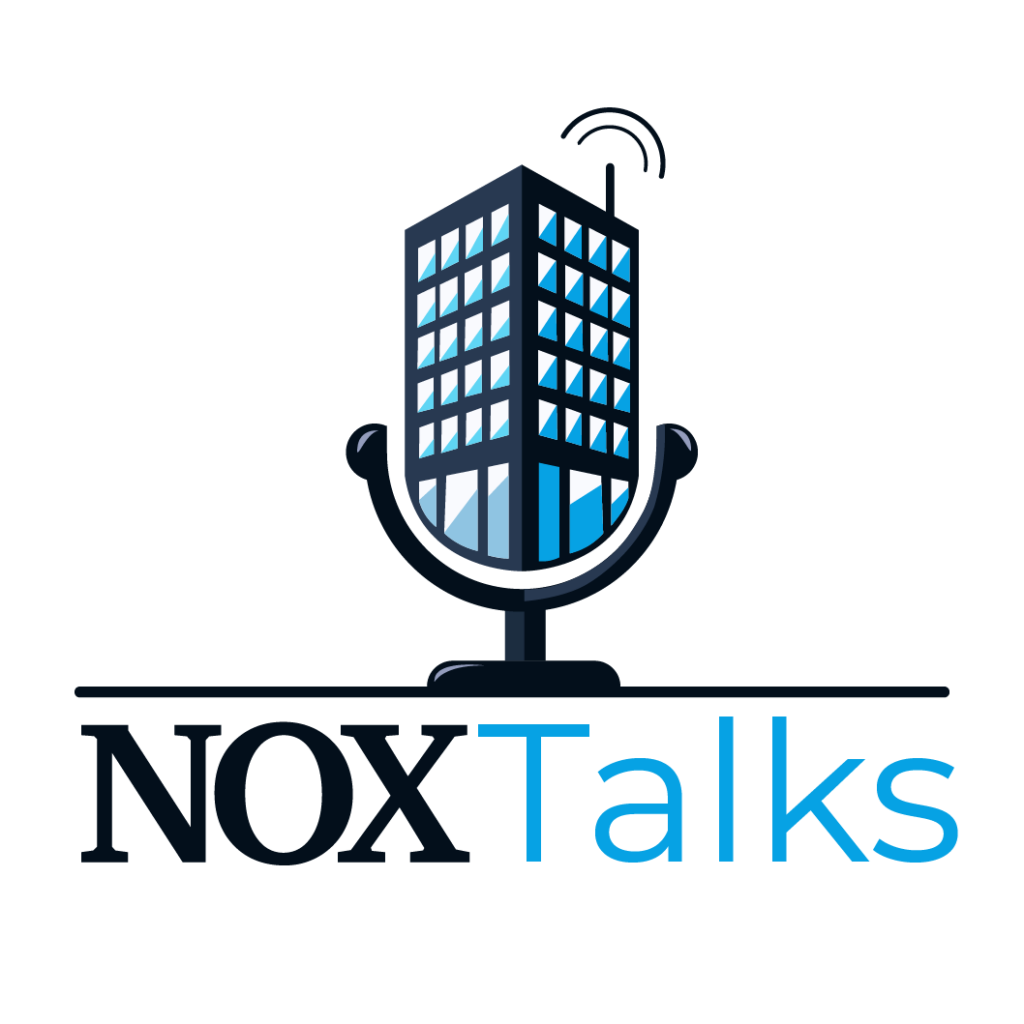Building automation systems (BAS) have evolved from simple control mechanisms to complex, interconnected networks that serve as the central nervous system of modern buildings. While these systems promise enhanced efficiency, reduced operational costs, and improved occupant comfort, the path to successful integration often resembles a minefield rather than a highway to operational excellence. For building engineers, facilities managers, and property owners, few scenarios are more frustrating than watching vendors point fingers at each other when systems refuse to communicate properly.
Hate to read? Listen to a podcast episode on this topic. Visit the NOXTalks Podcast for more episodes

The Hidden Costs of Integration Failures
When BAS integration goes wrong, the consequences extend far beyond technical inconveniences:
1. Data Silos and Information Gaps
Perhaps the most common integration nightmare occurs when systems collect valuable data but cannot share it effectively. A sophisticated HVAC system might optimise its performance based on internal algorithms, while the lighting system operates independently, missing opportunities for coordinated energy savings.
According to Lawrence Berkeley National Laboratory’s (LBNL) comprehensive meta-analysis, properly commissioned building systems can achieve a median energy reduction of 16% [Mills et al., 2011, updated 2020]. Many of these savings stem from effective system integration that enables coordinated control strategies across multiple building systems.
2. Operational Complexity and Management Overhead
Failed integration attempts often lead to “swivel chair integration” – where staff must manually transfer information between systems or maintain multiple interfaces to manage building operations. This not only reduces staff productivity but also increases the likelihood of human error in critical building functions.
CASE STUDY: A Fortune 500 corporate campus in Dallas implemented five separate automation systems that couldn’t communicate effectively. Facilities staff struggled with manually reconciling data between systems until implementing a unified integration platform, significantly reducing operational overhead while improving response time to comfort complaints (internal project data, client confidential, 2023).
3. Premature Obsolescence
Proprietary gateways lock owners into ageing tech and painful upgrades. When building systems can’t adapt to new technologies or requirements without expensive rip-and-replace approaches, the total cost of ownership rises dramatically, and buildings struggle to implement new efficiency or occupant experience initiatives.

Common Integration Pitfalls
Protocol Proliferation Problems
The BAS landscape has evolved with multiple competing protocols – BACnet, Modbus, LonWorks, KNX, and proprietary systems continue to coexist in the marketplace. While BACnet has emerged as the predominant standard (with over 60% market share according to BSRIA’s 2018 market penetration study [BACnet International, 2018], and Memoori’s 2024 BAS market study (paid report) still places BACnet comfortably in the lead, in the mid-60% range), the protocol itself has various implementations that aren’t always compatible.
Many integration nightmares occur when systems that supposedly use the same protocol struggle to communicate effectively due to different implementations or versions.
Insufficient Specification Detail
Projects frequently fail at the specification stage. Vague requirements like “shall integrate with existing systems” provide insufficient direction for vendors and contractors. When specifications lack detailed interoperability requirements, points lists, and specific integration testing procedures, the stage is set for disappointment.
Fragmented Responsibility
Traditional construction processes often separate mechanical, electrical, security, and IT systems procurement. When each system is purchased independently without centralized integration oversight, the result is predictable: systems that technically “work” but don’t work together.
Cybersecurity Complications
As buildings become more connected, cybersecurity concerns create additional integration challenges. Security measures essential for protecting building systems can conflict with integration goals if not planned properly. According to Kaspersky’s Industrial Control Systems Cyber Emergency Response Team, malicious objects were blocked on 40.6% of operational technology (OT) computers in 2022, including building automation systems [Kaspersky ICS-CERT, 2023].
Best Practices for Integration Success
1. Develop a Comprehensive Integration Master Plan
Successful integration begins with a clear master plan that defines:
- What systems need to integrate
- What specific data points need to be shared
- Required response times and update frequencies
- Who is responsible for each integration point
- How integration will be tested and verified
This master plan should be developed early in the project lifecycle, ideally during the schematic design phase, and continuously refined.
2. Embrace Open Systems and Standards
While proprietary systems may offer compelling features, their integration limitations often outweigh their benefits. Systems based on open standards like BACnet/IP, Modbus TCP, or industry-specific standards provide more reliable integration paths.
Industry case studies suggest that open-protocol BAS can materially cut integration and lifecycle costs compared to closed, proprietary alternatives. This occurs primarily through increased vendor competition, reduced dependency on single-source solutions, and simplified integration of new technologies over time.
CASE STUDY: The University of California, Davis Health implemented an open-protocol BAS across multiple buildings, resulting in a competitive bidding process that lowered initial integration costs compared to similar projects using proprietary protocols, while maintaining long-term flexibility for system expansion (UC Davis Facilities Management, “Campus Energy Initiatives Report,” 2022).
3. Implement a Systems Integration Manager Role
Designating a specific team member or consultant as the Systems Integration Manager creates accountability and ensures someone is looking at the big picture. This role should have authority across traditional discipline boundaries and should be involved from initial design through commissioning and handover.
4. Utilize Middle-Layer Integration Platforms
Rather than attempting direct system-to-system integration, many successful projects implement middleware integration platforms. These platforms – ranging from building analytics platforms to API management tools – provide normalized data models and can adapt to various systems without requiring customization of the original systems.
5. Implement Rigorous Testing Procedures
Integration testing should go beyond simple point-to-point verification to include:
- Full sequence testing across multiple systems
- Failure mode testing when communications are interrupted
- Load testing for data throughput during peak operations
- Cybersecurity vulnerability assessments
According to LBNL’s commissioning meta-analysis, the median cost to deliver commissioning in existing buildings is approximately US $0.30/ft² [Mills et al., 2011, updated 2020]. This investment delivers substantial returns through energy savings and reduced operational issues—particularly when commissioning explicitly verifies integration points between systems.

Future-Proofing Your Integration Strategy
As buildings become increasingly connected, integration strategies must evolve. Forward-thinking organizations are implementing several approaches to future-proof their BAS investments:
1. API-First Architecture
Rather than relying solely on traditional BAS protocols, leading organizations are requiring vendors to provide well-documented APIs (Application Programming Interfaces) that enable more flexible integration options. This approach shifts integration from the physical/protocol layer to the application layer, where adaptation is often simpler.
2. Edge-to-Cloud Architecture
Modern integration strategies increasingly implement edge computing devices that can normalize data locally before sending it to cloud platforms. This hybrid approach maintains local control while enabling cloud-based analytics and integration.
3. Semantic Data Models and Tagging Standards
Project Haystack and ASHRAE Standard 223P (Semantic Interoperability for Facility Data) provide frameworks for consistent, machine-readable descriptions of building equipment and data points. These semantic models dramatically simplify integration by providing a common “language” for different systems to exchange meaningful information.
4. Secure-by-Design Communication Protocols
BACnet Secure Connect (BACnet/SC) and Message Queuing Telemetry Transport (MQTT) with Sparkplug B are emerging as leading protocols for secure, reliable building communications in 2025. BACnet/SC addresses longstanding security concerns with traditional BACnet, while MQTT/Sparkplug provides lightweight, firewall-friendly communications ideal for integrating edge devices and cloud applications.
5. Digital Twin Implementation
Digital twins – virtual representations of physical building systems – are emerging as powerful integration tools. By connecting BAS data to a comprehensive digital twin, organizations can visualize relationships between systems and more easily identify integration gaps or opportunities.
Conclusion
For building engineers, facilities managers, and property owners, successful BAS integration is no longer optional – it’s essential for achieving efficiency, sustainability, and occupant experience goals. By recognizing common pitfalls, implementing best practices, and adopting forward-looking strategies, organizations can avoid the finger-pointing nightmare scenarios that plague so many building projects.
The most successful organizations approach integration not as a technical exercise but as a strategic investment that requires careful planning, clear accountability, and ongoing management. With proper attention to these factors, the promise of truly integrated building systems – responsive, efficient, and adaptable – can finally be realized.
Sources:
- BACnet International (2018). “BSRIA Market Penetration of Communications Protocols.” https://bacnetinternational.org/press-releases/research-study-indicates-bacnet-global-market-share-over-60/
- Kaspersky ICS-CERT (2023). “Threat Landscape for Industrial Control Systems.” https://ics-cert.kaspersky.com/media/Kaspersky-ICS-CERT-Threat-landscape-for-industrial-automation-systems-statistics-for-H2-2022-En.pdf
- Mills, E., Friedman, H., Powell, T., Bourassa, N., Claridge, D., Haasl, T., & Piette, M.A. (2011, updated 2020). “Building Commissioning: A Golden Opportunity for Reducing Energy Costs and Greenhouse Gas Emissions.” Lawrence Berkeley National Laboratory. https://evanmills.lbl.gov/projects/risk-management-non-energy-benefits
- ASHRAE (2023). “ASHRAE Standard 223P: Designation and Classification of Semantic Tags for Building Data.” https://www.ashrae.org/file%20library/technical%20resources/standards%20and%20guidelines/standards%20actions/samar_22_2024.pdf
- BACnet International (2023). “BACnet Secure Connect Implementation Guide.” https://bacnetinternational.org/wp-content/uploads/sites/2/2022/07/B-SC-Whitepaper-v15_Final_20190521.pdf
- Memoori (2024). “The Global Market for Building Automation Systems 2024 to 2028.” (Paid Report)
- UC Davis Facilities Management (2022). “Campus Energy Initiatives Report.” (Internal Link).

